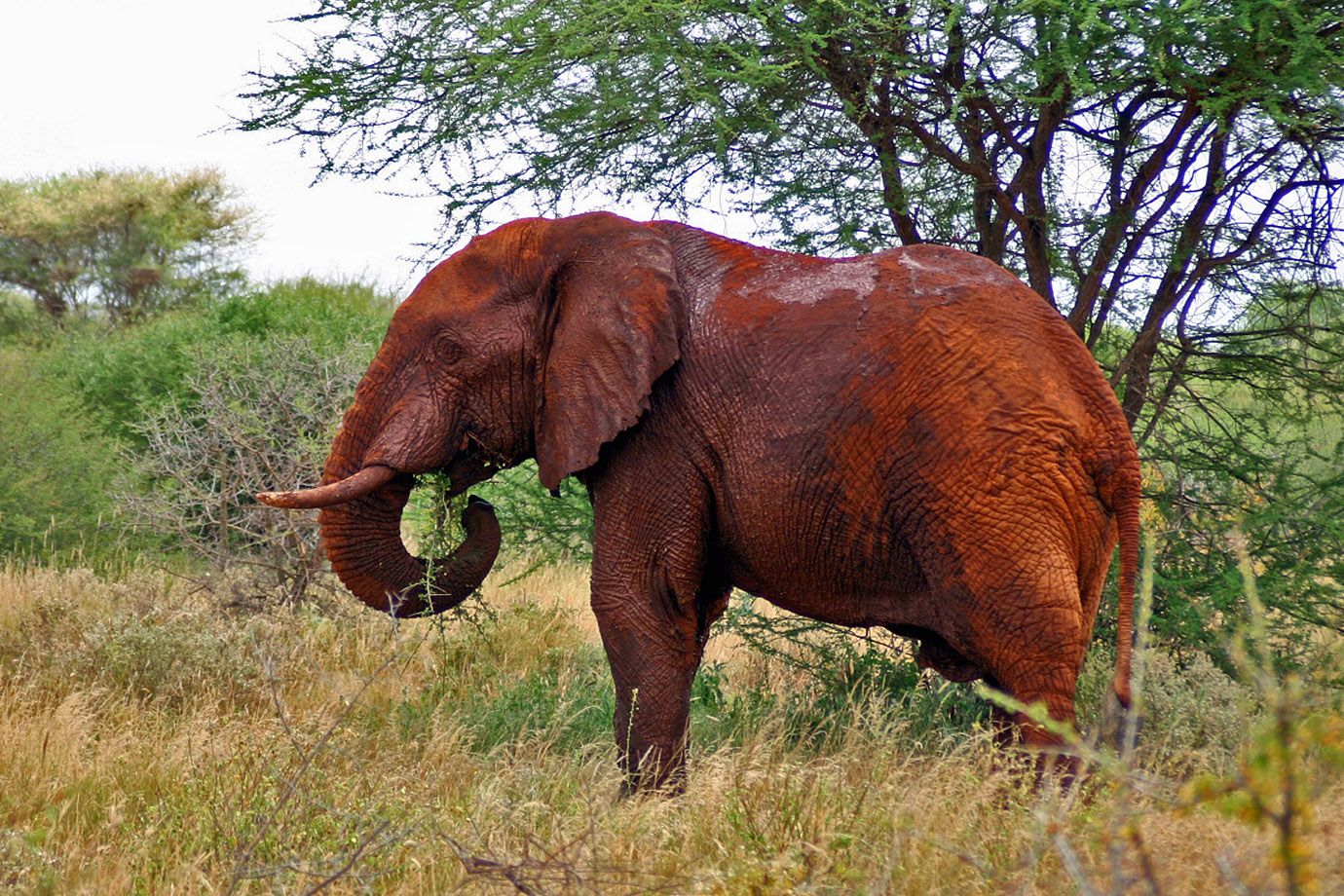
Red Elephant
The Red Elepant only differs in its colour from the others, because its special colour is the result of the red ground in this region.
Elephants (Elephantidae) is a taxonomic family, collectively elephants and mammoths. These are terrestrial large mammals with a trunk and tusks. Only two genera, Loxodonta (African elephants) and Elephas (Asiatic elephants), are living.
The African Bush Elephant is the largest living terrestrial animal, normally reaching 6 to 7.3 metres in length and 3 to 3.5 metres in height at the shoulder, and weighing between 6,000 to 9,000 kg.The animal is characterized by its large head; two large ears that cover its shoulders and radiate excess heat; a large and muscular trunk; two prominent tusks, which are well-developed in both sexes, although more commonly in males; a short neck; a large, barrel-like body; four long and heavy legs; and a relatively short tail. Its back feet have three toes that form a hoof, while the number of toes on the front feet have varied between four and five.
Source: en.wikipedia.org/wiki/African_Bush_Elephant -
14.04.2010
Red Elephant
A Red Elephant is not an especial species, but it got its abnormal colour from the typical red ground in this region.









